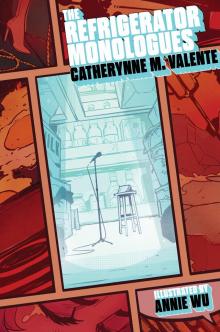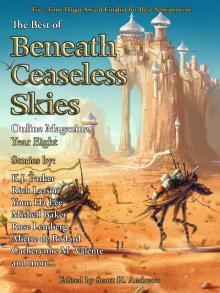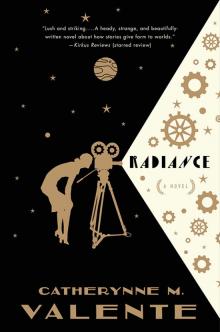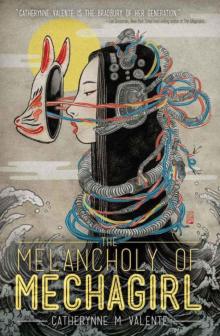


You Are Here, Page 28
Colin Ellard
CAN SPACE END?
It might seem hard to imagine any kind of impediment or braking force on the human tendency to effectively shrink all space to a single point. As foreseen by Paul Virilio, the notion that we might not need to frame our existence in anything like Euclidean geometry suggests that the current trends to instantaneous communication, virtual existence, and a kind of distributed embodiment in which we live everywhere and nowhere should only accelerate. As technological developments continue, especially those in the realm of computing and information processing, the most straightforward prediction is that we will continue to leverage our current abilities to produce artificial immersive experiences so that physical movement from place to place becomes less and less important. If we can raise a convincing simulacrum of a beach in Tahiti from our basement VR theater, then why bother climbing into our flying cars to go to the real thing? If we can flick a switch to embody a fully equipped avatar sitting at a conference table on the other side of the globe, then why put up with the cramped quarters of an aircraft cabin?
This conjures images of a kind of post-human existence in which we would live in ways functionally equivalent to brains in jars jacked into computer terminals, and there are reasons to be skeptical that this is how our future will unfold. Technology has made it possible for us to warp and weave our way through space in paths that defy physics, gravity, and essentially everything other than the speed of light, but there are already plenty of signs that there are limits to the extent to which we can allow such technologies to rule over our spaces while maintaining our happiness, or perhaps even our sanity. Although we may have left some of the wayfinding skills we share with other animals in ancient dust, we still sometimes seem to respond to the call of old biological circuits that remind us of the importance of place.
The current fascination with GPS and geo-coded data is one sign of an inner sense of the importance of the wheres of our lives. Michael Jones, the chief technical officer of Google and the developer of geospatial applications such as Google Earth, describes a romantic fascination with place-based computer data that draws hundreds of millions of users to such applications first to play and explore but ultimately to learn and to draw connections between themselves and the real places of the world.1 The best example of this is the Crisis in Darfur project, a joint effort between Google and the United States Holocaust Museum, in which virtual visitors can zoom over villages burned to the ground by Sudanese soldiers.12 Viewers can interact with villagers one on one by flying in close to see and hear firsthand accounts of atrocities from victims and their families. As always, a part of what moves us is the narrative, but being able to attach the story to places that can be seen on the screen adds considerably to the impact of the presentation and leads to a greater likelihood of action on the part of remote bystanders sitting at computers in another hemisphere. As has ever been the case, attaching story to place enhances the power of both.
The myth of the labyrinth speaks to a deep human need to maintain a grip on our own implacement in the world—how we are connected to a specific location on the planet. A story in which the central setting is a dark set of unintelligible caves that can be navigated only by maintaining a tight hold on the slender thread offered by Ariadne resonates with the primal fears we attach to the state of being lost. More innocuous forms of labyrinths, happily free of voracious Minotaurs, have been used for hundreds of years to help people maintain a sense of connectedness to location while moving through space. One of the grandest examples of such a labyrinth can be found in the floor of the Cathedral of Our Lady of Chartres, near Paris. Befitting the Gothic symbolism of the whole cathedral, the dimensions of the labyrinth laid into the floor are replete with sacred geometry and numbers, but the floor has a greater purpose: visitors complete a symbolic pilgrimage by walking the circuitous path to the center. In some ways resembling a Japanese garden that is designed to connect movement with vista in a carefully orchestrated experience, the labyrinth reminds us of our connections to the ground and invites us to examine explicitly the manner in which our own movements influence our relationships to places.3 In recent years, the popularity of labyrinths has increased notably. Patterned floors for use as labyrinths are being installed in community halls, in church basements, and on private land. Though the ostensible aim of such projects is to offer people a spiritual tool that enhances meditation while walking, such constructions also serve to renew and celebrate the human connection to place.
Place-based political movements have become an increasingly important force on the world scene. One of the most prominent modern instances of political reactions to the homogenization of space occurred in Chiapas, Mexico, when poor sustenance farmers reacted violently to economic threats to their existence caused by the passage of the North American Free Trade Agreement. The so-called Zapatista Revolution galvanized growing levels of dissent in the face of sweeping forces of globalization that were themselves being generated by our ability to communicate across global distances in an instant and move goods anywhere cheaply using abundant and inexpensive sources of energy. What is most often at the root of such place-based protests is an objection to the manner in which transnational corporations are able to submerge local economies and produce very real human suffering, but these uprisings can also be seen as expressions of unhappiness with a world that is shrinking, dropping its borders, and pushing where issues into irrelevance.4
Other, more gentle place-based initiatives involve renewed understanding of the connections between our lives and the places we inhabit. The popularity of the 100-Mile Diet, in which consumers are encouraged to pay close attention to the geographic origins of the food that graces their dinner table, is but one example of a generalized encouragement to “think local” whenever we are able to.5 The arguments in favor of such “localism” usually have more to do with the pragmatics of wasted energy, pollution, and bad farming practices than they do with the importance of human attachment to place. But this is not to say that forming such attachments is not an important part of the appeal of such approaches. Peter Mayle’s A Year in Provence,6 for example, may seem to be a romantic account of a bygone way of living, but it may be more like salve on psychic wounds caused by the fracture between the disconnected spaces of the modern world and our tightly knitted connections to places that our genes remember from ancient times.
Collectively, these signs of resurgence in our understanding of the importance of the where element of our lives suggest that even if human civilization found a way to continue to exist and to follow our current technological trajectory for a good deal longer, we could not be persuaded to abandon our devotion to physical place, no matter how seductive the realms of the virtual might become. Even if a virtual world looked and sounded exactly like the real thing, there is every chance that simply knowing it wasn’t real would be sufficient grounds for us to reject it. Though our minds may in some ways condemn us to live in a netherworld of semi-detachment from space, we will continue to recall enough of this missing connection to yearn for it and so include it as an important element in our lives.
PICKING UP THE PIECES OF SPACE
The modern pace of change in every realm from the political and social to the scientific and environmental is so rapid that trying to imagine the future is almost impossible. What seems safest to say is that any “business as usual” vision of our future is certainly delusional. Cheap energy will soon dwindle, and conflicts over resources will heat up as competition arises for the remaining pools of oil, water, and food. Some can muster no optimism that we will find any rational way to accommodate such rapidly changing prospects and that ultimately, when the lights go out and the computers shut down, having lost the tools and knowledge we need in order to do without them, we will essentially be back in the Stone Age.
At the same time as the sun is setting on the era of cheap energy, our environmental problems are heating up. Sea levels are rising, ecologies are changing faster than we can monitor them, and the
rate of extinctions continues as an unabated trend that will decimate the planet’s biodiversity. Unless such trends are slowed, halted, and eventually reversed, we can expect to see famine, drought, super-storms, and suffering on a vast scale.
In the face of such daunting prospects, it can be difficult to face each day, let alone to look into one’s children’s eyes and offer reassurances, other than to tell them that each of us is doing what we can to assure that the planet and our species will have a future. Yet for all the doomsaying, nobody can tell us with any certainty that the time for hope has passed, and provided this is so, there is still time for action.
I have argued in this book that the way our mind parses space is one of the root conditions underlying our astonishing ability to accomplish such technological wonders but also to neglect our stewardship of our planetary home to the extent that we risk losing it. Along the way, I have made recommendations for positive changes to help us work against our proclivity to carve up large-scale space into smaller, disconnected fragments. Some of these recommendations have to do with ways to reorganize our lived spaces, and others with ways to use space-collapsing communication technologies to forge connections with the remote quarters of the planet that are affected by our very local actions. But I have also taken pains to point out that such suggestions will not by themselves reverse our current course.
Massive technological intervention in the form of carbon sequestration and the development of alternative fuel sources will also be required if we are to salvage any semblance of our current way of life, but even these happy developments will allow us to dodge the dual bullets of climate change and energy shortages only if we also find ways to effect huge changes in how we think about our lives, and if we reorder our values and make reality checks on our wants and our needs. In the absence of a “business as usual” model, the alternative will be to work much harder than we do at present to live locally, joining small social networks where we can share expertise and resources, avoid unnecessary travel, and minimize our ecological footprints. Another book could be written to flesh out these simple ideas (and many already have been), but regardless of what particular recommendations are eventually offered, key to our future existence and happiness will be a thorough understanding of how our mental connections to space influence our understanding of place. By trying to make explicit the links between how our mind comprehends space and many aspects of our modern lives, my goal is to contribute to greater awareness of the manner in which our neurological hardware, the heritage of our biology, must be accommodated if we are to find a place in the cosmos that is comfortable, happy, and sustainable in the long term.
Where are we? We are here now. Our future together depends on finding ways to understand and to feel the deep truth of that connection between person and place.
ACKNOWLEDGMENTS
I thank the people who helped make it possible for me to have a career in science, including John Yeomans, Mel Goodale, and Barrie Frost, and colleagues who believed in me and encouraged me to write, including Mike Dixon, Ken Coates, Pat Wainwright, Barbara Bulman-Fleming, Derek Besner, and Phil Bryden. I’m also grateful to those who read, commented on, and discussed parts of this book—or simply helped to keep the intellectual fires burning by fueling me with amazing ideas— including Hong-Jin Sun, Jack Loomis, Jim Blascovich, Mark Zanna, Marcel O’Gorman, and Cordula Mora. I give special thanks to my colleagues at the Waterloo School of Architecture, especially Thomas Seebohm (whom I miss every day—we were just getting started), Philip Beesley, and Robert Jan van Pelt. These individuals not only made some of the experiments described here possible, but they also helped me understand what an old-time experimental psychologist might be able to contribute to designing the built world.
Some great students have helped me with experiments and spent time with me discussing some of the ideas in this book—in particular, Deltcho Valtchanov, Justin Perdue, Kevin Barton, Brian Garrison, Punya Singh, Ela Malkovsky, and Leanne Quigley.
I’m lucky to have friends who listened to my complaints about this project, shared the joys of it (and an occasional bottle of Scotch), and offered suggestions both helpful and deliberately ridiculous. This circle includes Richard Akerman, who sent me new and interesting snippets at least once a day; Brandy and Ian Cameron, who shared the Leverette Transform; Janet and Chris Piers, who showed me the Arctic; Peter and Anita Mason, who took me where the bears were; Andrew Brooks; Kate and Brooke Oland; Mark Wright; and Marysia Bucholc. Janeen Armstrong, whom I’ve met only in cyberspace, flipped me a great title, which helped bring about the book’s cover design.
I’ve had a ball learning about the trade publishing world from Jim Gifford and Nita Pronovost at HarperCollins Canada, and Dan Feder and Melissa Danaczko at Doubleday. Without these people, my book would have been long and boring. I’m grateful every day for “Special Agent Bukowski,” my literary agent, Denise, who worked very hard to make this book happen, pushed me to do my best work, and saved me from certain doom on many occasions.
Finally, I thank my family. My brothers, Norman and Martin, and my sister, Jennifer, have been in on this idea from the beginning. My children, Sarah, Emily, Jessica, Rebecca, Mei Ling, and MacLaughlin, followed me on a wild ride, including a year spent pacing a Nova Scotia beach (where much of the writing was done) with Gilbert the scruffy wonder dog. My wife, Karen, has been my mentor, advisor, accountant, confessor, rock, soul, life coach, and fan. I’d get lost with her anywhere.
NOTES
INTRODUCTION: LOST AND FOUND
1. Lynn Rogers, a field researcher with the U.S. Department of Agriculture, describes some of the navigational feats of black bears in her article “Navigation by Black Bears,” published in the Journal of Mammology 68, no. 1 (1987), 185-188.
2. Edward Casey’s extraordinary books document some of the interplay between philosophy, both ancient and modern, and how we use and think about space. His book Getting Back into Place, published by Indiana University Press (Bloomington) in 1993, is his most accessible work.
3. Briane Greene has written a fascinating and mind-boggling account of space and time as the physicist sees it entitled The Fabric of the Cosmos: Space, Time and the Texture of Reality (Knopf: New York, 2004).
CHAPTER 1: LOOKING FOR TARGETS
1. The epochal paper by McKay and colleagues was published in the high-profile journal Science: D. S. McKay et al., “Search for Past Life on Mars: Possible Relic Biogenic Activity in Martian Meteorite ALH 84001,” Science 273 [1996], 924-930.
2. A group showing evidence that magnetite similar to that found in the Martian asteroid could be formed by simple non-biological processes was led by David McKay’s brother Gordon. See D. C. Golden et al., “A Simple Inorganic Process for Formation of Carbonates, Magnetite, and Sulfides in Martian Meteorite ALH84001,” American Mineralogist 86, no. 3 (2001), 370-375.
3. Tom Collett and Lindsay Harkness wrote an entertaining chapter on the variety of solutions to problems of distance vision entitled “Distance Vision in Animals,” in Analysis of Visual Behavior, edited by D. J. Ingle, M. A. Goodale, and R. J. W. Mansfield (MIT Press: Cambridge, 1982), pp. 111-176.
4. Valentino Braitenberg’s marvelous book Vehicles: Experiments in Synthetic Psychology (MIT Press: Cambridge, 1984) describes simple thought experiments showing how seemingly complex behavior can emerge from simple combinations of wheels, motors, and sensors.
5. Yarbus’s early experiments on eye movements are best described in his book Eye Movements and Vision, first published in Russian in 1965 but translated into English by Basil Haigh in 1967 (Plenum Press: New York).
6. James Gibson continues to influence a vast number of scholars in fields as varied as architecture, fine art, psychology, and urban planning. Specialists in each field claim to understand what he meant to say, yet each group takes something quite different from his words. In part, this is probably because of the opacity of some of his language. Like others trying to express entirely new ideas, Gibson had to st
rain language to contain his thoughts. His first extended discussion of optic flow can be found in his book The Perception of the Visual World (Greenwood: Westport, CT, 1974). Edward Reed has written the major biography of Gibson James Gibson and the Psychology of Perception (Yale University Press: New Haven, CT, 1989), which contains much interesting detail about his stint in the military and its influence on his thought.
CHAPTER 2: LOOKING FOR LANDMARKS
1. Some details of Tinbergen’s remarkable life can be found in a brief autobiography that he wrote on the occasion of his Nobel Prize in 1973. The text can be found at http://nobelprize.org/nobel_prizes/medicine/laureates/1973/tinbergen-autobio.html. Hans Kruuk has also written a nice biography of Tinbergen entitled Niko’s Nature: The Life of Niko Tinbergen and His Science of Animal Behaviour (Oxford University Press: Oxford, 2003).
2. Tinbergen’s classic digger wasp studies are described in his first book, The Study of Instinct (Oxford University Press: Oxford, 1951).
3. It is difficult to think of a single good source that summarizes Tom Collett’s extraordinary contributions to our understanding of how insects navigate. His work, always published in top-quality journals, commands a great deal of attention among biologists and has made great contributions to the field. Two recent technical papers covering some of the ground I mention are T. S. Collett and M. Collett, “Memory Use in Insect Visual Navigation,” Nature Reviews Neuroscience 3 (2002), 542-552, and V. Durier, P. Graham,and T. S. Collett, “Snapshot Memories and Landmark Guidance in Wood Ants,” Current Biology 13 (2003), 1614-1618.














